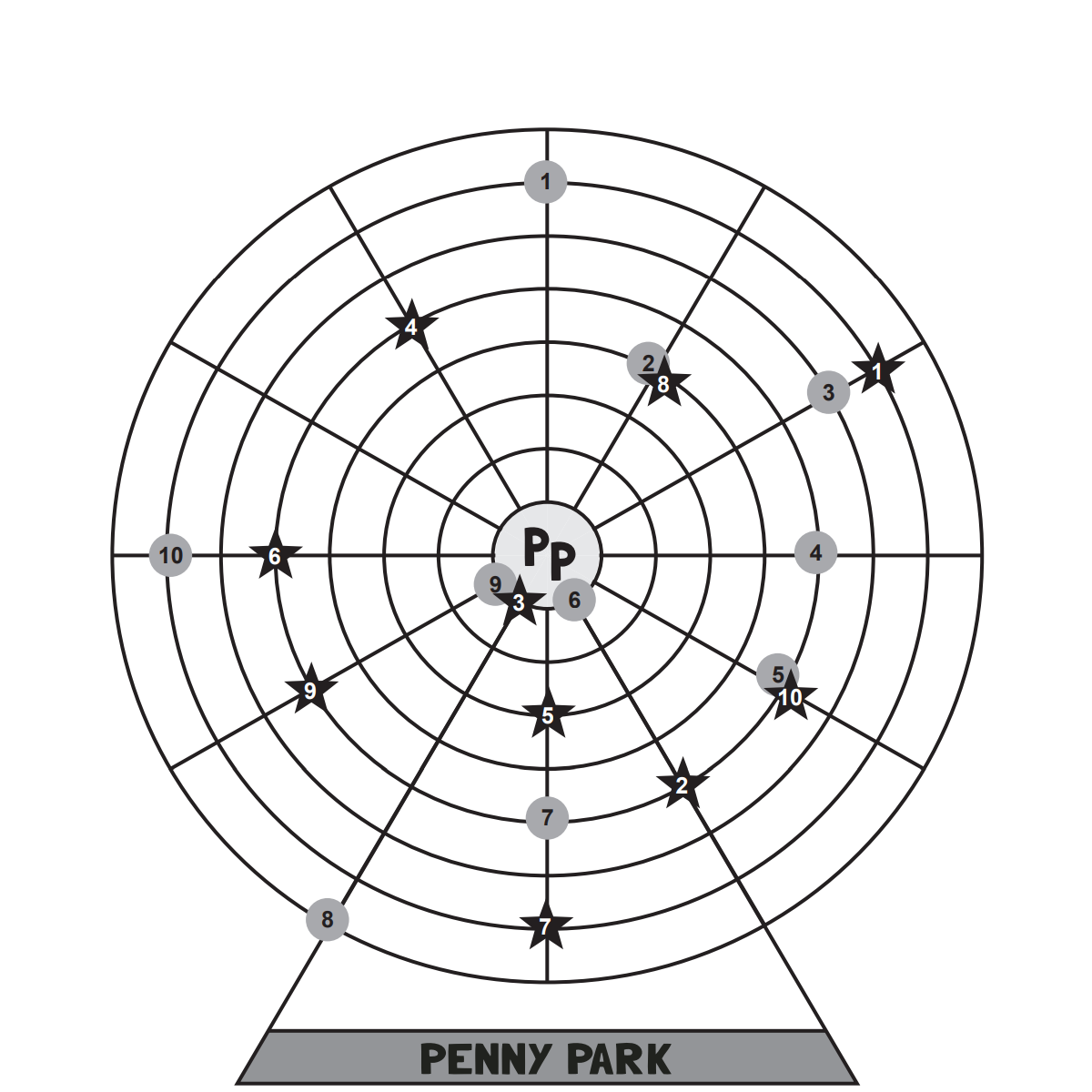The Ferris of Them All
Each of the six grids below represents an iteration of a ride. Each cell within the grid is a car on that ride.
Spin 1
Make a single loop in the ride below. Lines run through the center of the cars. The loop never crosses itself, branches off, or goes through the same car twice.
- The loop passes through each car containing a black or white circle.
- When the loop passes through a white circle, it runs straight through that car, but must make a right-angle turn in at least one of the adjacent cars.
- When the loop passes through a black circle, it makes a right-angle turn in that car, then must go straight through the next car on both sides.
- Every car that could have a white or black circle in it does.
- No pair of adjacent cars in the ride’s innermost concentric circle are both empty.
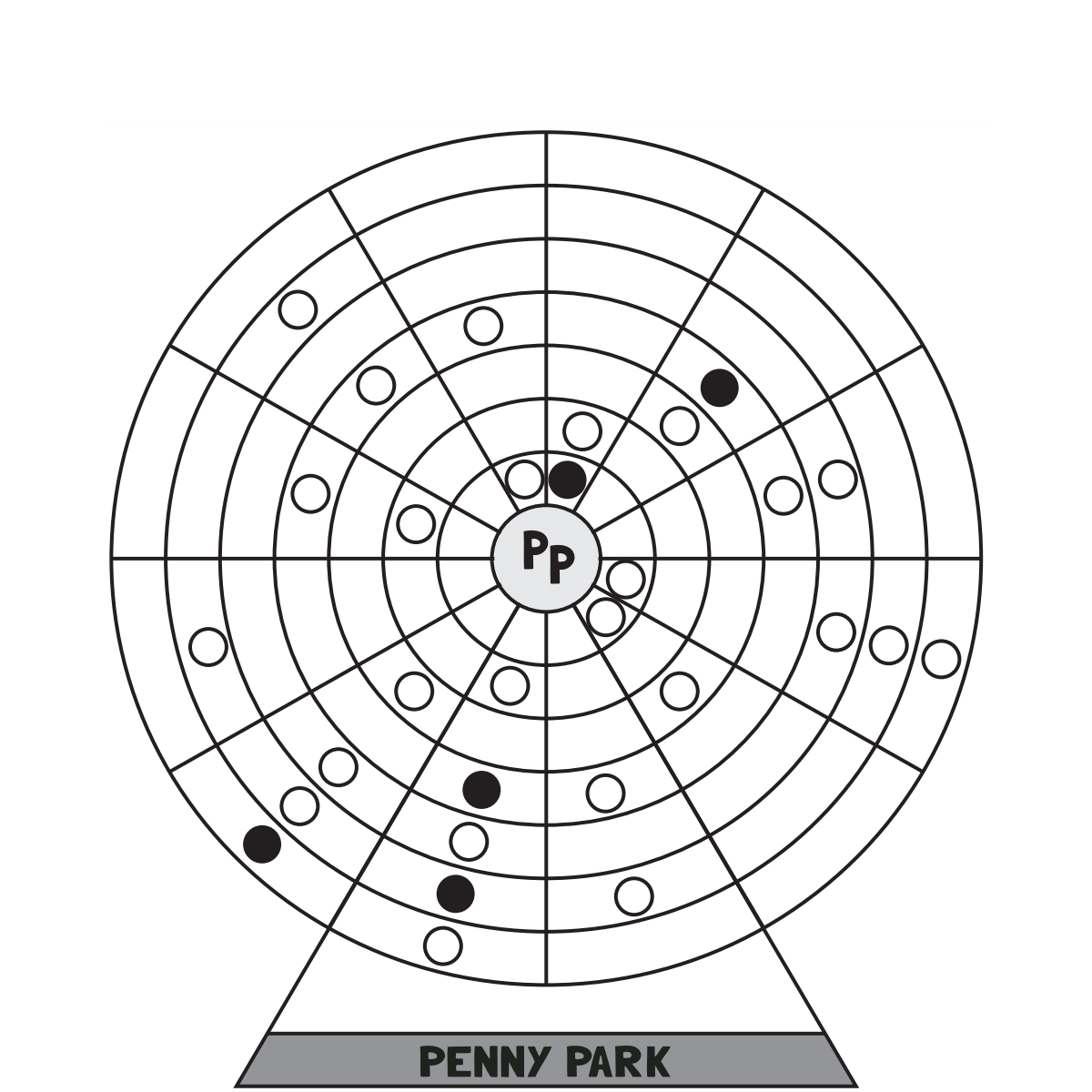
Spin 2
Transfer your loop from Spin 1 into this iteration of the ride. Then color in some cars blue, red, or green.
- Only cars that have a right angle in them can be blue.
- Only cars that have a line running straight through them parallel to the circumference can be red.
- Only cars that have a radial line running straight through them can be green.
- The loop never passes through two colored cars in a row. In fact, the loop must pass through at least one unshaded car on one side of a colored car, and at least two unshaded cars on the other side.
- Blue cars contain one rider. Red cars contain two riders. Green cars contain three riders. The numbers outside each section tell you how many total riders are in that section.
- Each number inside the ride indicates a run of that many consecutive unshaded cars (including the one the number is in) between two colored cars in that particular concentric circle. (These numbers don’t care about the loop, just the concentric circle they appear in.) The loop may or may not run through the numbered cars.
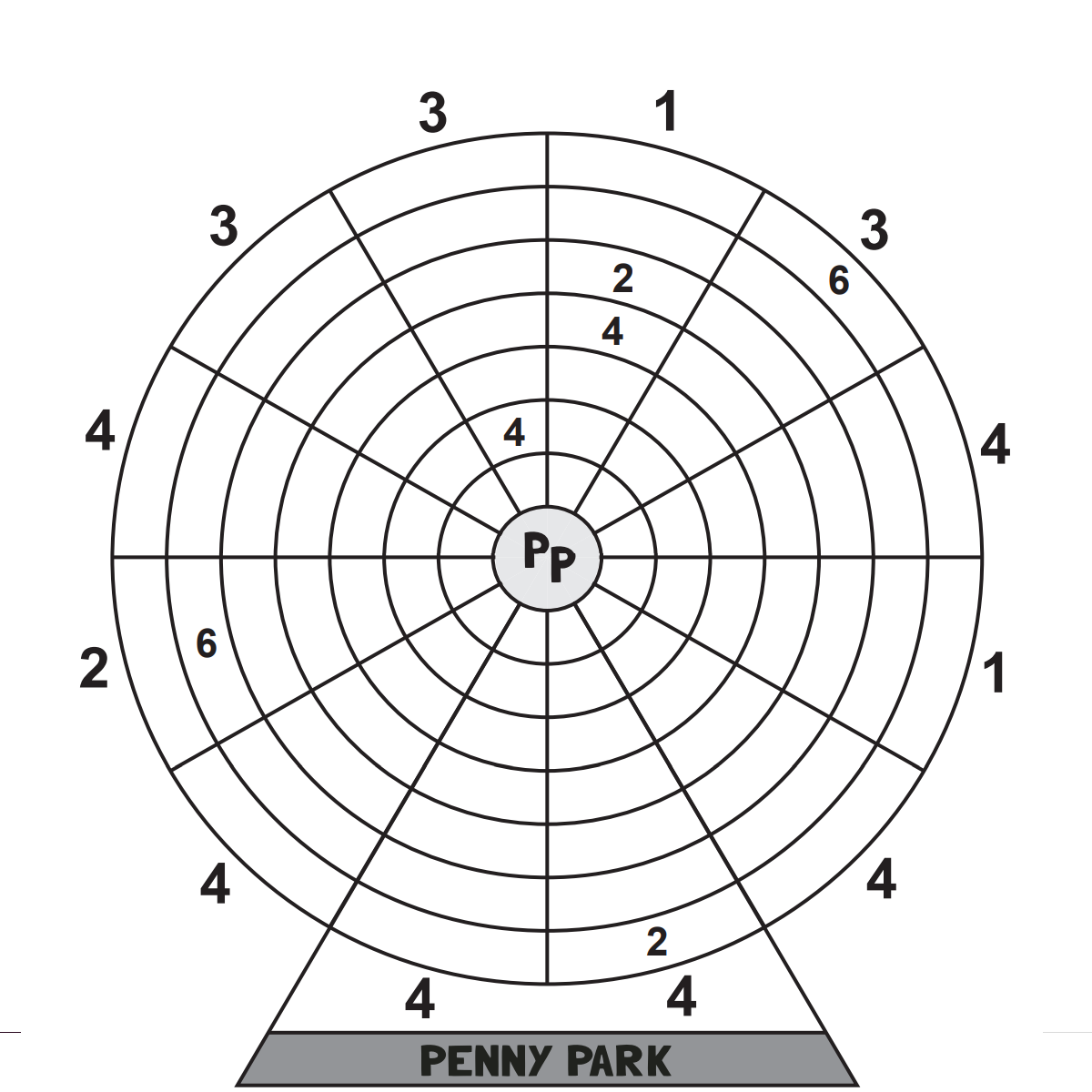
Spin 3
Transfer your blue, red, and green colored cars from Spin 2 into this iteration of the ride. Then fill the colored cars with the following numbers:
1 2 3 3 3 4 4 4 5 6 6 6 7 7 7 7 8 9 9 9 9 10
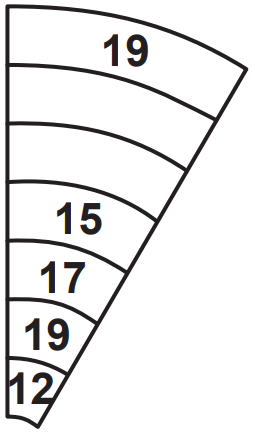
- A number in a blue car is greater than the next number that appears clockwise in its concentric circle.
- A number in a red car is less than the next number that appears clockwise in its concentric circle.
- A number in a green car is equal to the next number that appears clockwise in its concentric circle.
- The numbers outside the ride tell you the sum of all the numbers in that section.
- The numbers in the wedge on the right tell you the sum of all the numbers in the indicated concentric circles.

Spin 4
Rotate the ride from Spin 3 such that the numbers you added overlap only white cars in this iteration of the ride, then transfer those numbers into those cars. Then fill each shaded car with the number 0, 1, 2, or 3.
- Each number you transferred from Spin 3 indicates the sum of the numbers in all adjacent shaded cars, including cars that are diagonally adjacent.
- If a section has any 3s in its shaded cars, that many 3s are shown outside that section.
- If a section has any 0s in its shaded cars, that many 0s are shown outside that section.
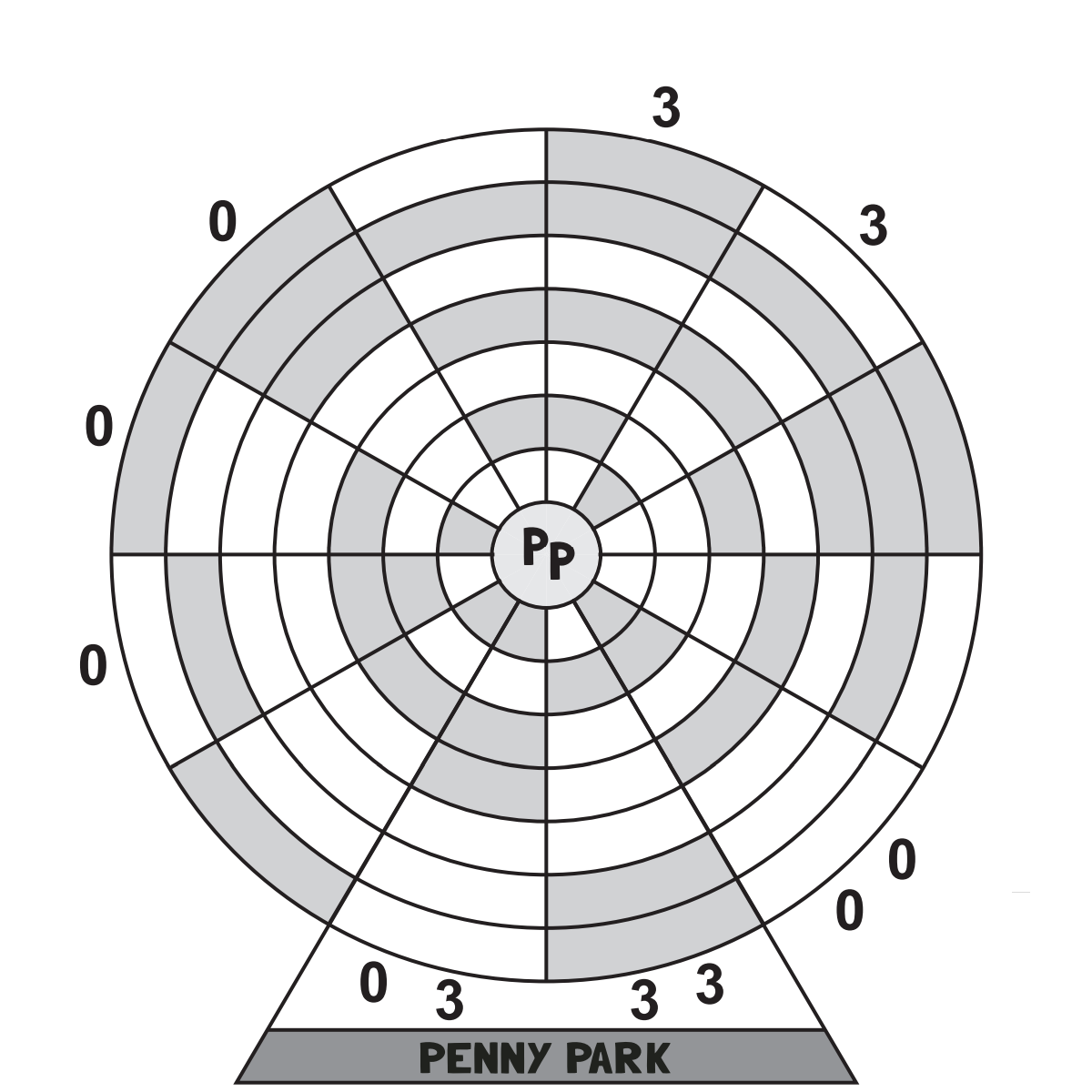
Spin 5
Transfer the numbers you added to the shaded cars in Spin 4 to the ride below. Then make a single loop in the ride. This time, unlike in Spin 1, lines run along the edges of the cars. The loop never crosses itself or branches off.
- Each number indicates how many edges of that car are part of the loop.
- An empty car may have any number of lines around it.
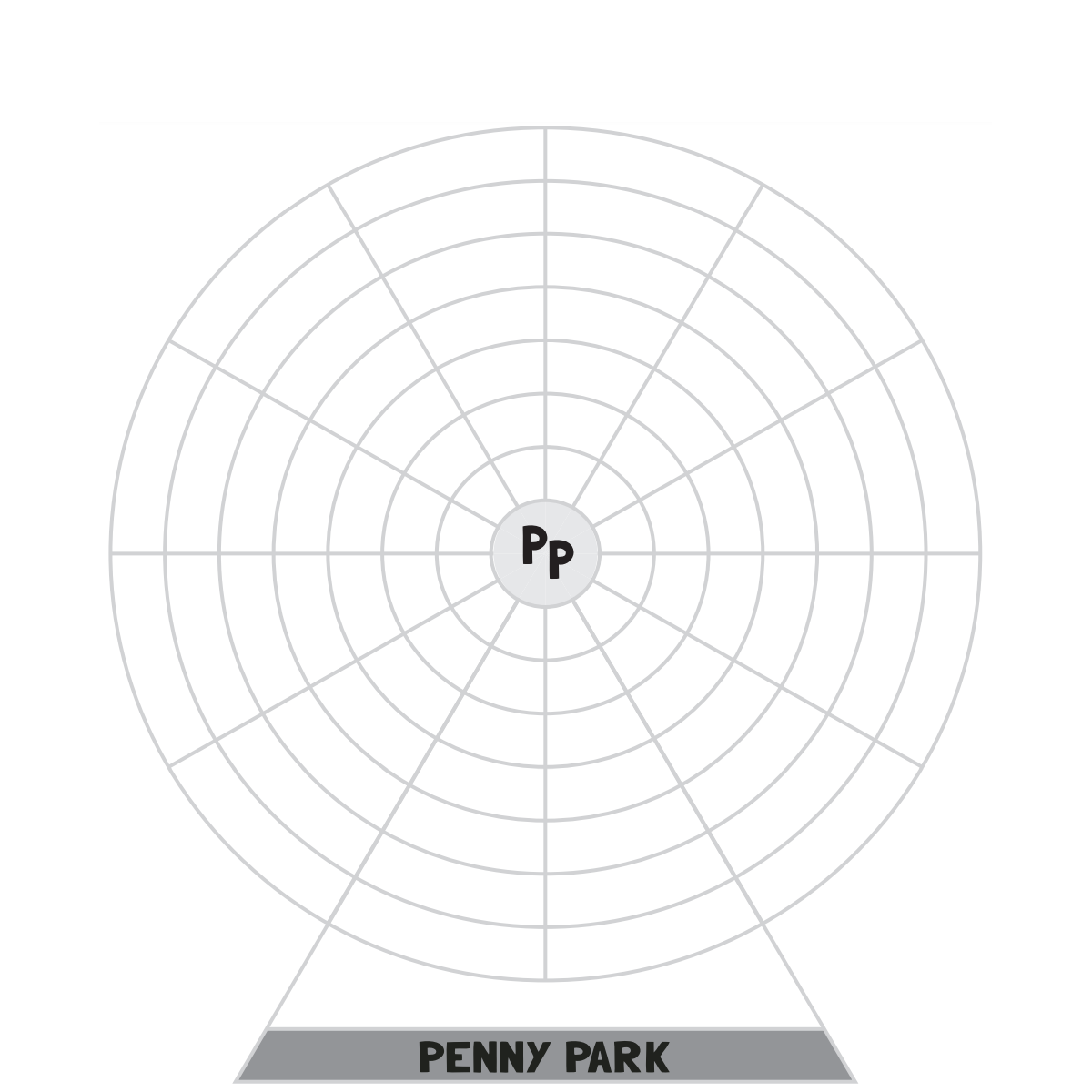
Final Spin
Now the spinning really begins! Using the loop from Spin 5, and rotating it for each rider as necessary, observe the riders get on and off the ride.
- Riders can enter and exit the ride only at a point where the loop makes a right-angle turn.
- Each rider gets on at the indicated circle and gets off at the corresponding star.
- Riders always travel through the loop such that they would move clockwise on the part of the loop that runs along the outermost edge of the ride.
- For each rider, count the number of straightaways that they ride. A straightaway is a ride segment between two right angles; it can be either radial or parallel to the circumference, and it can include multiple car edges.
